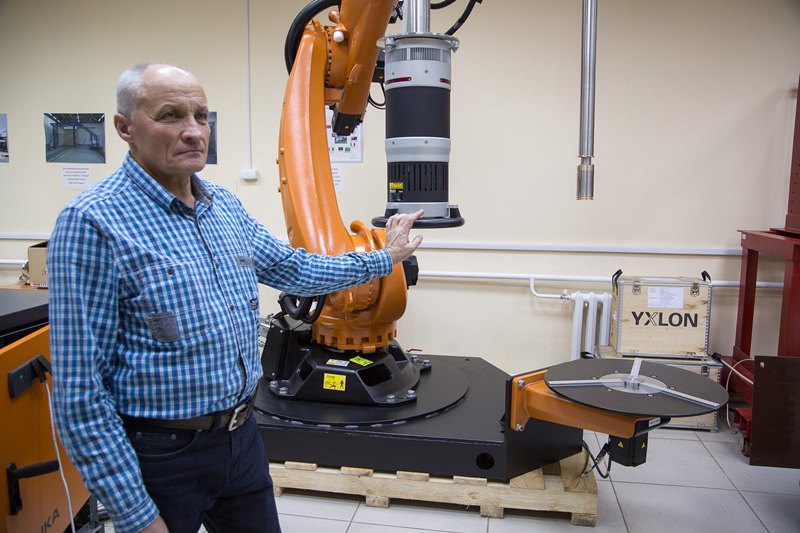Scientists of Tomsk Polytechnic University created an X-ray complex to detect the smallest defects in the rotors of gas turbine engines of modern civil and military aircrafts. To date, the facility has no direct counterparts in Russia and abroad. The scientists designed and assembled the complex by the order of the JSC United Engine Corporation (UEC). Now the complex is prepared for acceptance by the customer and for supply to an engine plant in Rybinsk, Russia.

The complex consists of a robotic manipulator, an X-ray machine, a linear radiation receiver and a rotating table where tested objects are placed. The complex can operate with rotors up to 70 cm in diameter. The radiation receiver is placed inside the rotor and the X-ray machine stays outside.
As a result of X-ray scanning specialists obtain a high resolution digital image of a weld, which displays even very small defects up to 100 microns in size. The data obtained is archived and can be stored for up to 20 years.
‘The rotor of the aircraft engine operates under huge thermal and mechanical loads. It consists of disks connected by electron-beam welding. It is a high-quality technique but there may also be defects. The most dangerous are places where metal is not welded. In these places a rotor may simply breakdown thus causing an accident. In aviation any abnormal situation invites a disaster,’ says the leading expert of the Department of Physical Methods and Devices of Quality Testing, Doctor of Technical Sciences Alexander Cheprasov.
Traditionally, rotors are tested with a film sensitive to X-rays. The film is used to seal welds. Under radiation an image of defects is displayed on the film. Despite being a highly precise method, it takes a long time and is not suitable for all products.
‘For our experiments the customer provided us with a rotor that was non-destructive tested using X-ray film. Due to undetected defects it broke down at the testing stage.
For some products, the use of X-ray film is rather laborious process and takes much time. Whereas, a radiation source should be placed inside the product that is not always possible due to the size of the radiation source. Therefore, the customer set us the task to create an automated radiographic complex of high spatial resolution without using the X-ray film,’ explains the scientist.
To solve the problem of placing a large source of radiation inside the product, TPU researchers apply an inverse radiation transmission scheme.
Tomsk radiographic complex will be installed at the customer enterprise in the dedicated room and staff will work in another dedicated operating room.
The facility is controlled with software which was also developed at TPU. It is equipped with a security system, so in case of potential abnormal situations the complex will be switched off.
‘The complex can operate around the clock without interruption. Its application is versatile. It may be used for non-destructive testing of any thin-walled objects up to two meters in diameter, as well as products of any arbitrary shape. The non-destructive testing technology developed for this facility may be applied for testing significantly larger objects, for example, gas turbine power plants installed on ships or on ground,’ adds the scientist.